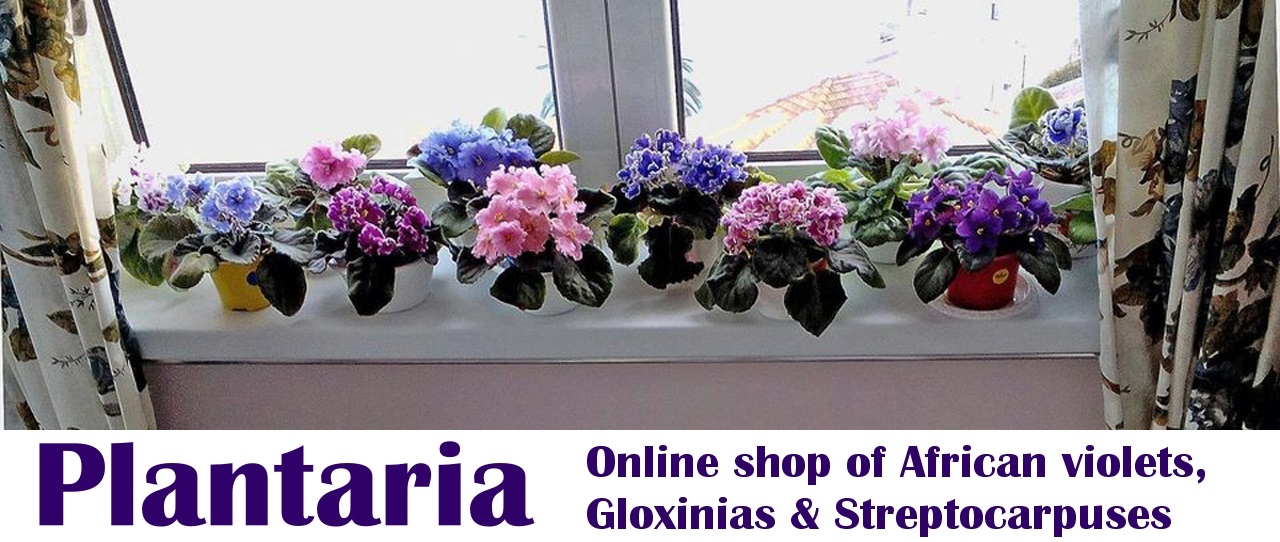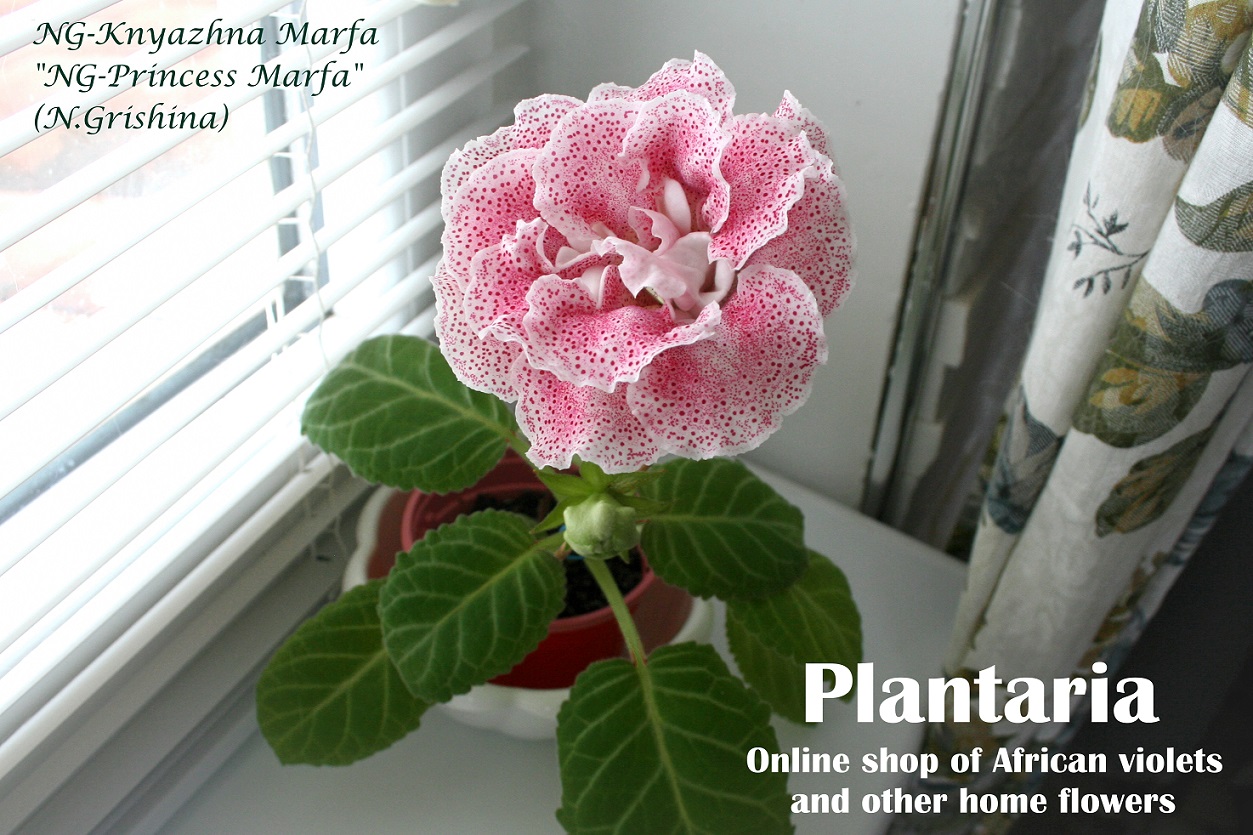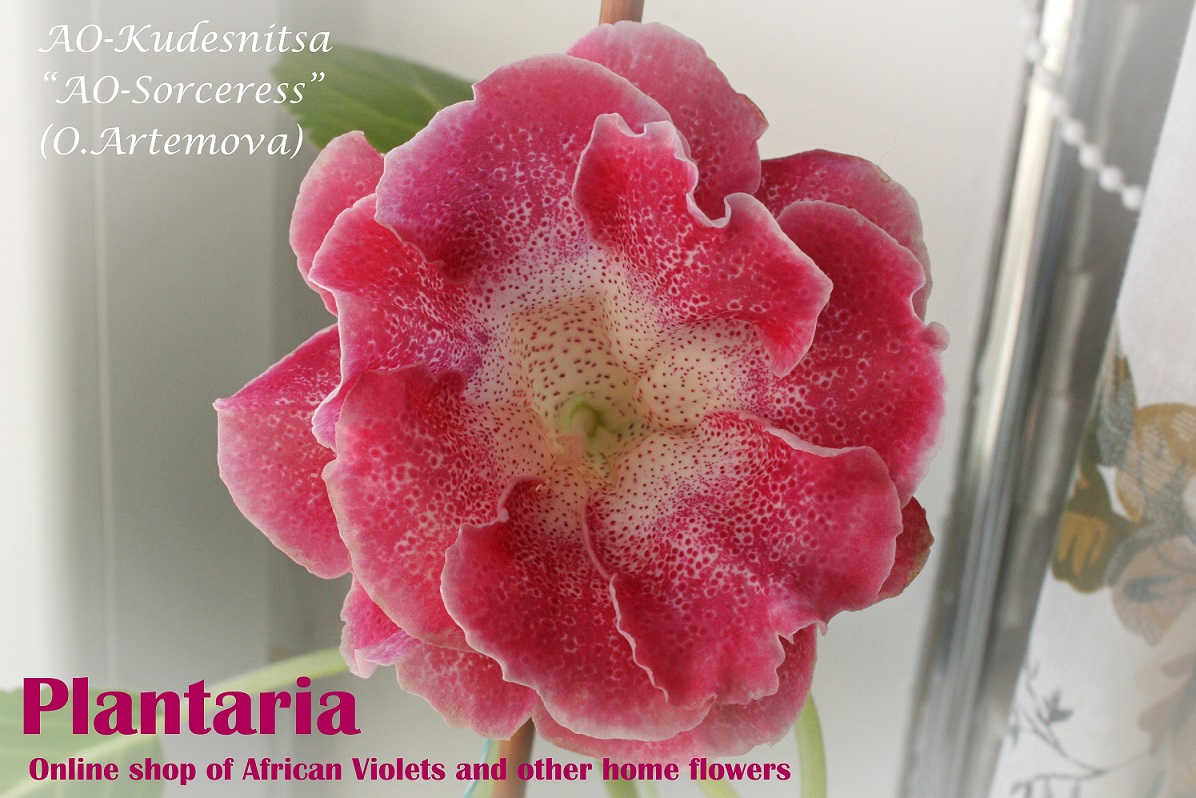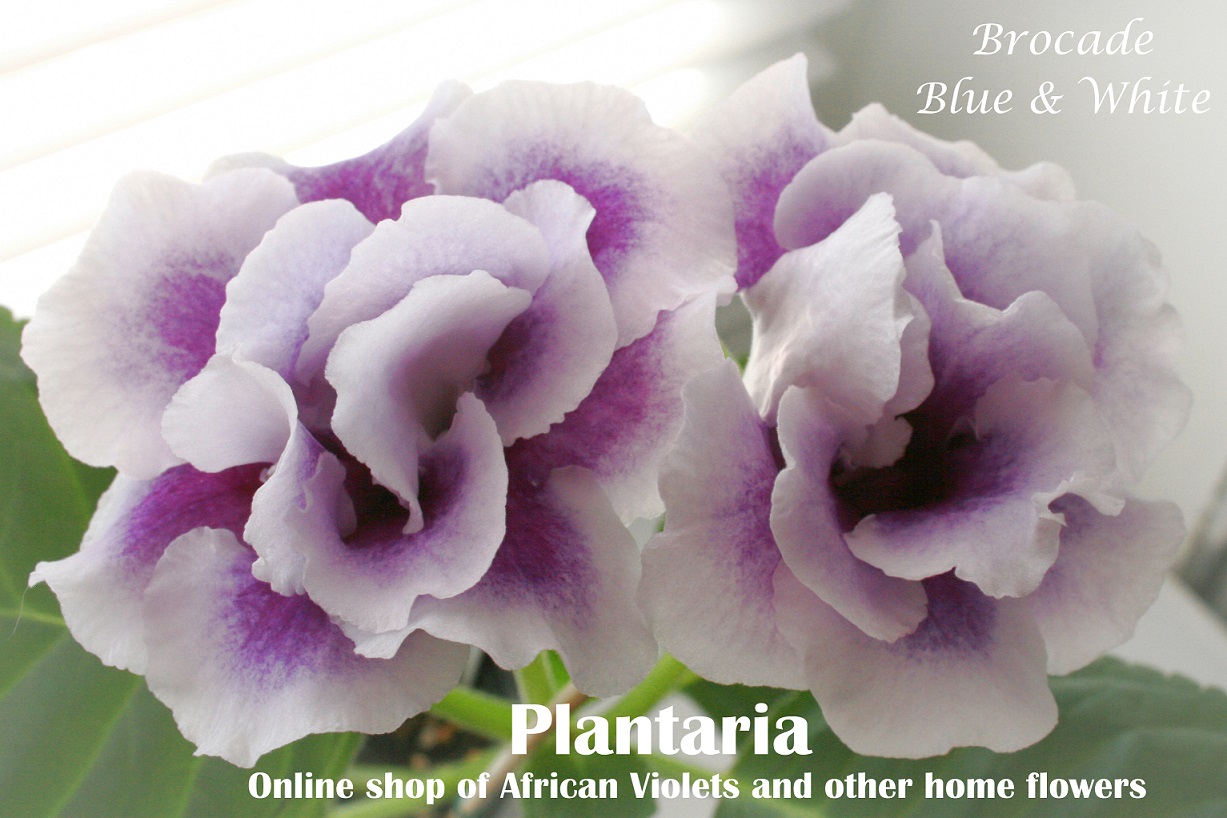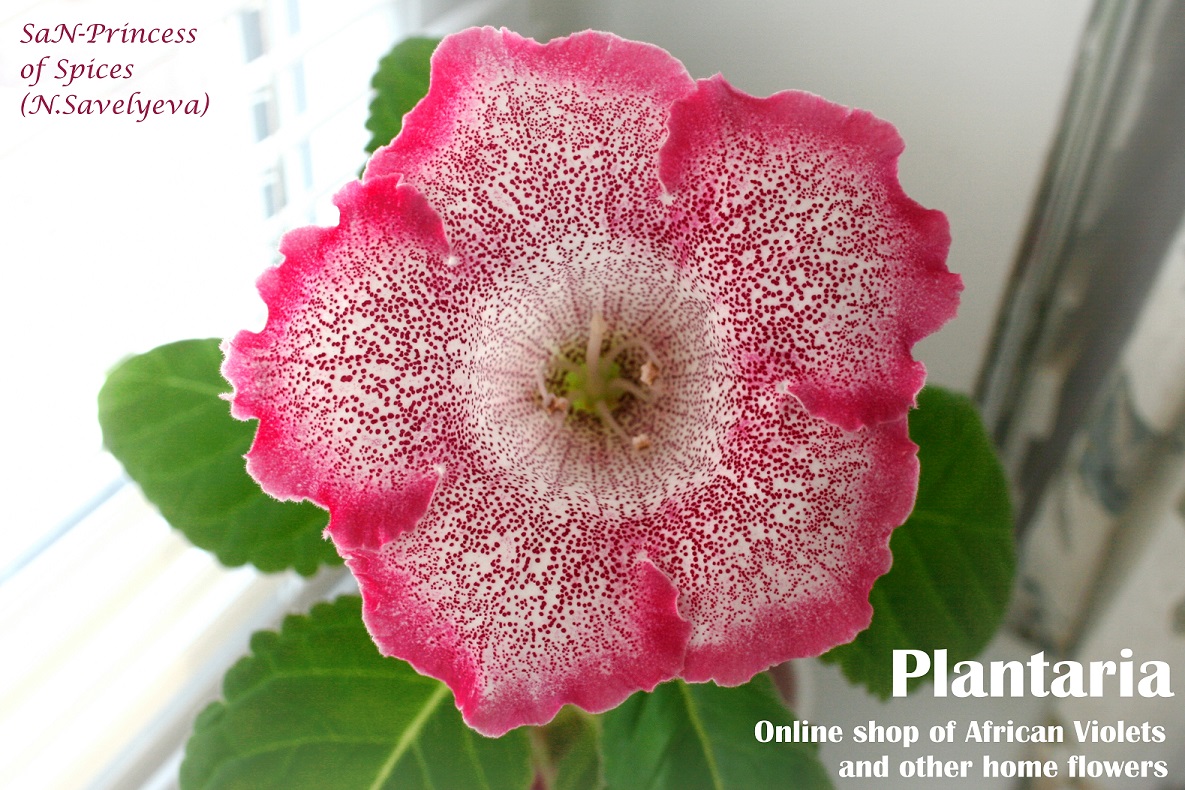
Gloxinias (Sinningia speciosa) are very beautiful home plants which actively grow and continuously produce huge colorful blooms from spring till late autumn. They easily adapt to any growing conditions and therefore they are very simple in cultivation. If you haven’t grown gloxinias yet, just try a couple of them and your will be totally enchanted!
PLACE:
Gloxinias like to grow in warm light places. The best temperatures for these plants are 22°C-26°C (72°F-79°F), however they can resists much higher temperatures as well as direct sunlight in the morning and in the evening. Sun in daytime will cause sunburns on the leaves. Flowering plants should be kept in cooler place without direct sun – it will extend flowering period. The lowest temperature acceptable for growing and flowering is 16°C (61°F). Gloxinias don’t like big difference between day and night temperatures.
WATERING:
Water the plants regularly when a top layer of a substrate becomes dry, to keep the medium in a pot always slightly moist, but not too wet. Avoid over-watering and excessive drying of a substrate. Water should be soft (boiled or filtered) and slightly warmish – about 2-3° warmer than room temperature. Add water under the leaves in small quantities evenly at several points around the pot for equal moistening of substrate. Don’t pour water on leaves and flowers.
Another way of watering is to add slightly warmish water to a tray under gloxinia pot. Wait for 15-30 minutes to let the soil in the pot to absorb the necessary amount of water. Pour out the rest of water from a tray – don’t leave the plant staying in water for long time as it can entail root and tuber rot.
Wick watering: In our opinion it’s the most comfortable way of growing African violets, streptocarpuses and gloxinias. Water is transferred to the soil in a pot through a nylon wick due to difference in capillary pressures. It constantly provides a plant with as much water as it exactly requires. Thus wick watering prevents a plant from being over-dried or over-watered. This is very important, because most cases of plants loss are caused by mistakes in watering regimen.

All our plants have nylon wicks. To make the system work, just water a plant traditionally, so that the soil becomes moist and the wick becomes all wet. Then install a pot with a plant on a bigger container filled with water. Please note, that there always should remain at least 1cm (0,5 inch) of free space (without water) between the bottom of a pot and surface of water.
Sometimes wicks may suddenly dry out and stop working (transferring water). In this case just repeat all steps for starting a wick as described above. Check your plants regularly to be sure that wicks are working.
For those clients who prefer traditional watering, we recommend to use wicks during the periods of their vacations or long absence.
FERTILIZING:
Gloxinias like fertilizers. Twice a month use any complex fertilizerfor home flowering plants in 2 times lower concentration than recommended in instruction.
REST (DORMANT) PERIOD and REPOTTING:
Gloxinias actively grow and continuously flower from early spring till late autumn. In the late autumn or in the beginning of winter their leaves and stems start wilting. At this moment fertilizing should be stopped. Watering should be progressively reduced and stopped completely when all visible parts of plant (flowers, leaves and stems) dry out completely. A pot with the tuber can be kept anywhere, but it’s better to put it in a cool dark place. Gloxinia will stay dormant for 1,5-3 months. In early spring it will start growing. At this moment the plant should be carefully repotted to the fresh soil. The tuber should not be placed too deep – soil level should remain the same. After repotting gloxinia should be moved into a warm light place, it will need regular watering and fertilizing.
PROPAGATION: Gloxinias can be propagated by leaves, by a part of stem with 2-4 leaves, by bloom-stalks. The best way of propagation is to keep freshly cut leaves / stems with leaves / bloom-stalks in water until they produce roots 2-3cm/1”-1,5” long. After that they should be planted in soil (70-80% peat + 20-30% perlite). Don’t bury them deeper than 1-2cm/0,5”-1” in soil, otherwise an appeared tuber will rot.
There are 2 possible scenarios of leaf propagation:
1) Little baby plants will appear near the leaf. Wait until they grow rather big and strong (at least 4-5cm/2” in size), carefully cut them out, put each baby in a little cup with 0,5-1cm/0,5” of water, wait when it produces roots 2-3cm/1”-1,5” long and plant a baby into the soil. A big mother leaf can produce several “batches” of little babies. This process can last up to 1 year. Finally a mother leaf will start yellowing and wilting, but don’t throw it away, because a big tuber has already appeared inside the soil. After a short dormancy period a very good and strong adult plant will grow from this big tuber and bloom very quickly.
2) A mother leaf can stay for several months without producing baby plants. During this time a good big tuber is growing inside the soil. Sometimes it takes up to 1 year. Finally a leaf will yellow and wilt and in a short time after that a good strong adult plant will grow from this big tuber and bloom very quickly.
Wishing you very happy growing!

